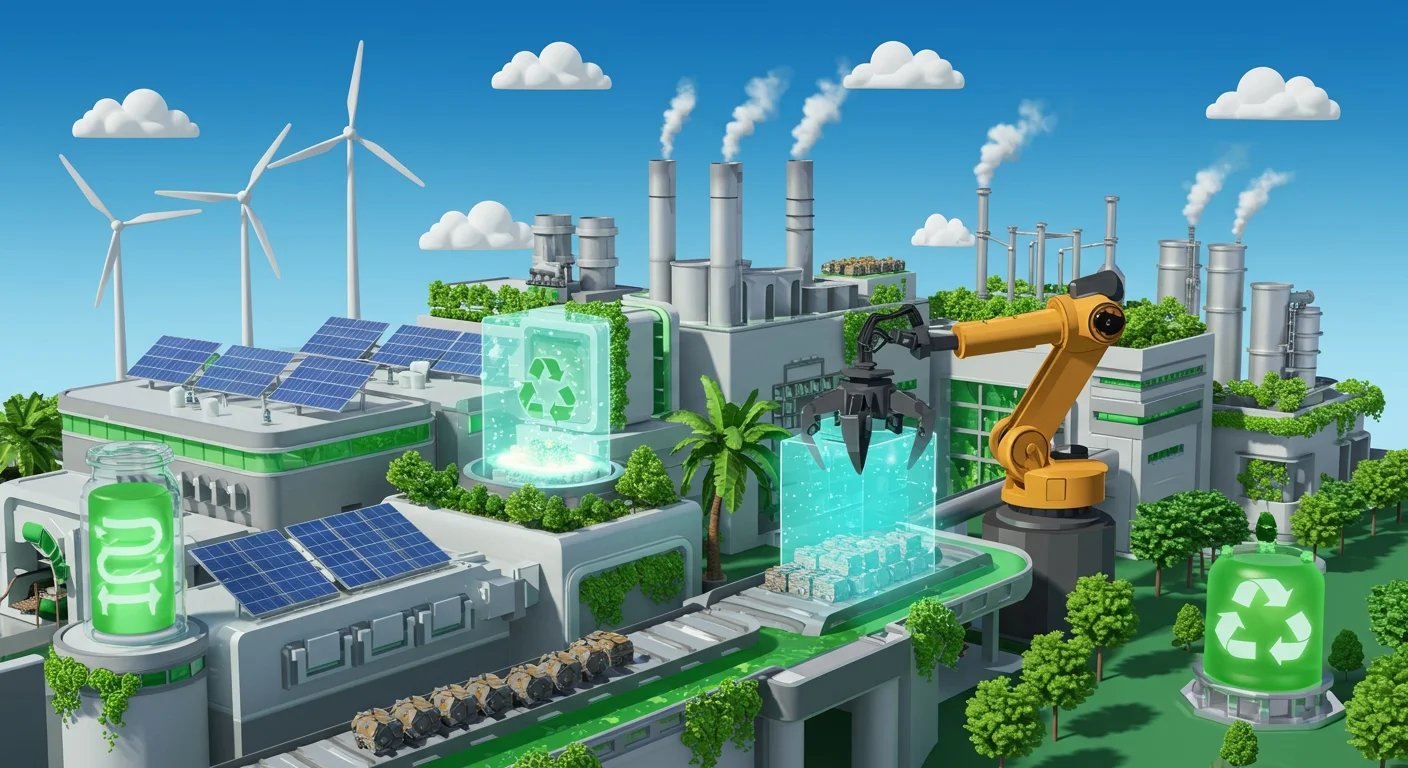(MENAFN- AIIEM) In an era defined by environmental consciousness and resource scarcity, the manufacturing sector faces increasing pressure to adopt more sustainable practices. This shift towards environmentally responsible production is encapsulated by the concept of Green Manufacturing Techniques . It's not merely a trend but a fundamental re-evaluation of how goods are produced, aiming to minimize ecological impact while maximizing efficiency and profitability. Embracing these techniques is crucial for businesses looking to thrive in the 21st century, ensuring both economic viability and planetary well-being.Table of Contents What Are Green Manufacturing Techniques? Key Principles of Sustainable Production Top 5 Green Manufacturing Techniques in Action Lean Manufacturing and Waste Reduction Renewable Energy Integration Sustainable Material Sourcing Water Conservation and Treatment Product Lifecycle Management (PLM) for Eco-Design The Benefits of Adopting Green Manufacturing Techniques Conclusion: A Greener Future for Manufacturing
What Are Green Manufacturing Techniques?Green manufacturing, also known as sustainable manufacturing, involves the creation of manufactured products through economically-sound processes that minimize negative environmental impacts while conserving energy and natural resources. It also enhances employee, community, and product safety. The scope of green manufacturing is broad, encompassing everything from product design to end-of-life management, and it seeks to achieve a balance between economic growth and environmental stewardship.
Key Principles of Sustainable ProductionAt its core, sustainable production adheres to several guiding principles:
Waste Reduction: Minimizing waste at every stage of the production cycle. Resource Efficiency: Optimizing the use of raw materials, water, and energy. Pollution Prevention: Avoiding or reducing the generation of pollutants. Product Lifecycle Thinking: Considering environmental impacts from raw material extraction to disposal. Renewable Energy Use: Shifting away from fossil fuels towards clean energy sources.
Top 5 Green Manufacturing Techniques in ActionLet's delve into some of the most impactful Green Manufacturing Techniques being implemented across industries today.
1. Lean Manufacturing and Waste ReductionLean manufacturing principles, traditionally focused on maximizing value and minimizing waste (Muda), naturally align with green objectives. By streamlining processes, reducing inventory, and improving efficiency, lean practices inherently lead to less energy consumption, reduced material waste, and lower emissions. This synergy makes lean manufacturing a powerful foundation for any green initiative.
2. Renewable Energy IntegrationTransitioning from fossil fuels to renewable energy sources like solar, wind, and geothermal power is a cornerstone of green manufacturing. Companies are installing solar panels on factory roofs, investing in off-site renewable energy projects, or purchasing clean energy credits to power their operations. This not only reduces carbon footprint but can also lead to significant long-term cost savings.
3. Sustainable Material SourcingThe choice of materials profoundly impacts a product's environmental footprint. Green manufacturers prioritize materials that are recycled, recyclable, biodegradable, sustainably harvested, or sourced locally to reduce transportation emissions. Innovations in biomaterials and advanced composites are also playing a crucial role in developing more eco-friendly products.
4. Water Conservation and TreatmentManufacturing can be water-intensive. Green techniques focus on minimizing water usage through closed-loop systems, advanced filtration, and smart irrigation for landscaping. Treating wastewater to a high standard before discharge or recycling it back into the process significantly reduces environmental impact and conserves precious resources. For more on water efficiency, you might find this external resource helpful: EPA WaterSense .
5. Product Lifecycle Management (PLM) for Eco-DesignPLM systems enable manufacturers to design products with their entire lifecycle in mind. This includes selecting sustainable materials, optimizing for energy efficiency during use, designing for disassembly and recycling, and minimizing waste at end-of-life. Eco-design ensures that environmental considerations are integrated from conception to disposal, making products inherently greener. To understand the broader implications of design, consider how it integrates with overall lean strategies .
The Benefits of Adopting Green Manufacturing TechniquesThe transition to green manufacturing offers a multitude of advantages beyond environmental protection:
Benefit CategorySpecific Advantages
| Environmental Impact | Reduced carbon footprint, lower pollution, conservation of natural resources, minimized waste. |
| Economic Advantages | Lower operating costs (energy, water, waste disposal), increased resource efficiency, potential for tax incentives, new market opportunities. |
| Brand & Reputation | Enhanced corporate image, improved customer loyalty, stronger stakeholder relations, competitive differentiation. |
| Regulatory Compliance | Easier adherence to environmental regulations, reduced risk of fines and legal issues, preparedness for future legislation. |
| Innovation & Efficiency | Drives process improvements, fosters innovation in product and process design, improves operational efficiency. |
The journey towards sustainable industrial engineering is continuous, but the adoption of Green Manufacturing Techniques marks a significant step forward. From integrating renewable energy and optimizing material use to embracing lean principles and comprehensive eco-design, manufacturers have a powerful toolkit to reduce their environmental footprint and enhance their operational resilience. The future of industry is undoubtedly green, promising a more sustainable and prosperous world for generations to come.























Comments
No comment